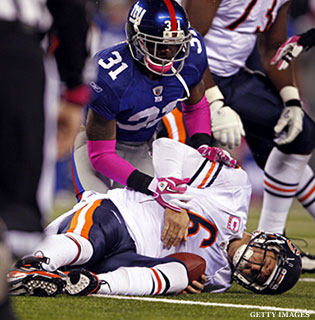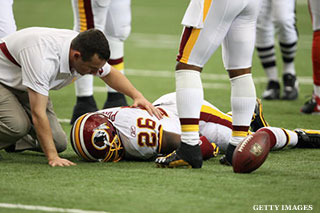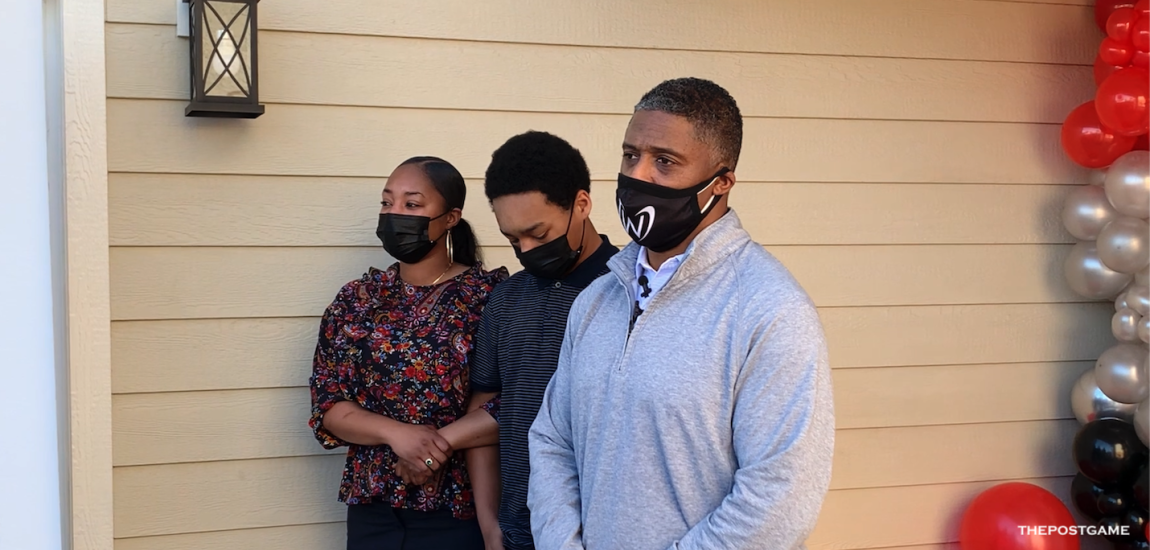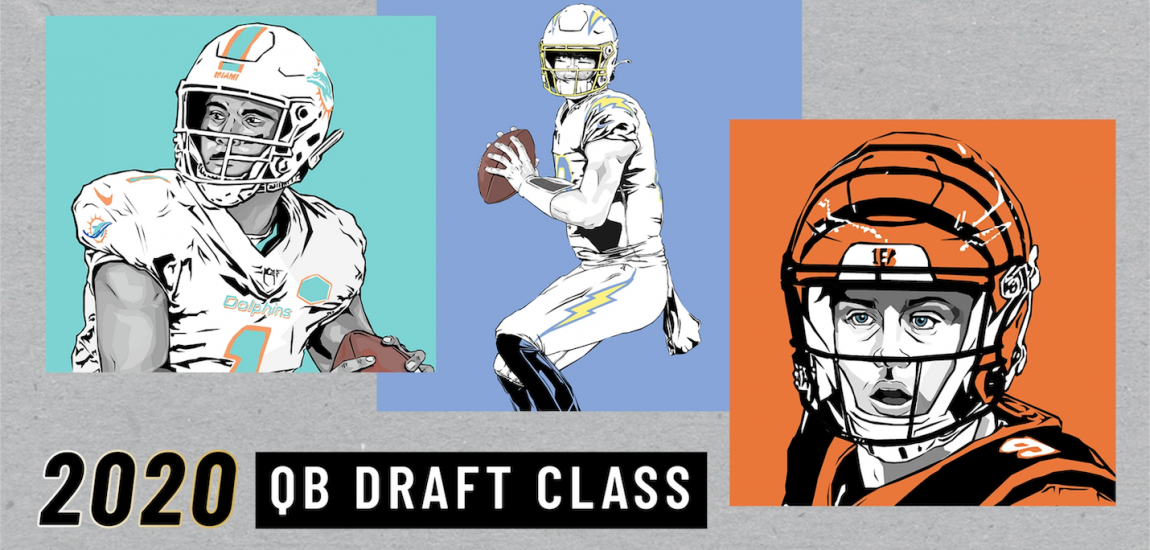
The NFL Scouting Combine dominated sports news this week, although training camps won't open until late July. The NFL also announced plans to push their off-season calendar back -- the combines would be pushed later, free agency would start in April, the draft would be held in May. This is primarily a public relations strategy to dominate the year-round sporting calendar.
From a news-making perspective, NFL events would essentially take center stage for the entire year. This follows a season of unprecedented television saturation. For many weeks of the regular season the Top 5 Nielsen-rated television shows were night-time NFL football. "Football in America" on NBC, which is a pre-game show, topped every other form of television. Out of hundreds of entertainment choices, Sunday, Monday and Thursday night football were the nation's obsession. No collegiate or professional sport has ever been so popular.
The looming specter of concussion consequences puts the future of the sport at risk.
The physics of collision have altered on the football field. Gil Brandt, NFL super-scout, reported Sunday that he timed a wide receiver in the 40 yard dash at 4.17 seconds. When I began representing professional football players, a receiver who broke into the 4.5 range was considered a speedster. If these differentials appear slight -- look at a 40-yard dash in slow motion and see the degree of separation and how many strides this produces. It is dramatic. Football involves bodies in motion, a traffic accident of collision on every play.
When I started my practice in 1975, Fred Dryer played defensive end for the Los Angeles Rams at 220 pounds. He faced offensive tackles that were 240-250 pounds and guards that weighed less. At this year's combine an offensive lineman ran a 4.65 40, a record. If linemen could run a 5.2 thirty years ago, they were considered amazing athletes. Today's offensive tackles need to weigh 320 pounds to compete. In 2001 I
represented the second pick in the first round of the draft, Leonard Davis, offensive tackle from Texas taken by the Arizona Cardinals. He weighed in at 375 and could break five seconds in a 40-yard dash.
When an offensive lineman hits a defensive lineman to begin the play in football a low level concussive hit occurs and the brain of each player is impacted. The definition of a concussion does not require a player to be unconscious and motored off the field. It is a blow to the head or body, which causes a change in brain function. Each one of these blows jars the brain. Not only are current players larger and faster -- they are stronger. Advanced nutrition and training techniques have produced a new generation of Robo-Warriors.

The amount of weight they can lift is extraordinary. Larger, stronger bodies moving at an accelerated rate produces much more impactful collisions. Imagine an offensive lineman who plays four years of high school football, four more at college, and ten years in the National Football League. Simply multiply the number of plays and collisions and it is possible that a player will retire from football with 10,000 or more low-level
concussive hits. What is the long-term impact of this damage to the brain?
Players who are not lying motionless on the field post-concussion have been left out of the discussion. And yet damage is occurring steadily. This is why I have called the concussion damage in football and other collision sports a ticking time bomb and undiagnosed health epidemic.
This is why I have held three conference conferences with leading neurologists since the early 1990's and followed that up with three more seven years ago. I couldn't represent the stars of football and define helping them as simply stacking dollars in their bankbooks while sending them into a playing environment that would threaten their long-term health Parents and athletes have accepted the fact that playing football breaks down the structure of many joints in the human body -- the neck, hip, elbow, knee, ankle and back. But are parents willing to accept the reality that prominent neurologists like Dr. Julian Bailes, Dr. Bob Cantu, Dr. Mark Lovell, Dr. Mickey Collins and Dr. Tony Strickland are predicting?
Our conferences showed that multiple concussions trigger an exponentially higher rate of premature senility and dementia, Parkinson's, ALS, Alzheimer’s, depression and chronic traumatic encephalopathy. It is one thing to know that years of football will make it harder for an athlete to bend down and pick up his child when the athlete is 40. What if he can't recognize the child because of concussion related dementia?
The father of the best quarterback in the NFL, Tom Brady, has been quoted saying that he would not permit his son to start football again as a youngster, given today's risks. How many other parents will allow their children to start at the youth football, Pop Warner level, with this knowledge? The lawsuit filed against the NFL by more than 1,400 retired players citing their injuries from concussions are a proximate threat to the league. Could those players have known the risk when the lead physician of the NFL, Dr. Elliot Pellman, was denying that multiple concussions had been proved to be damaging to long-term health? The damages could be crippling for the league and have a chilling effect on the willingness of players to participate. Insurance costs could become prohibitive.
I love football and think it has many teaching benefits for young people. It stresses self-discipline, teamwork, resilience, and courage under pressure -- all valuable skills. No sport has the capacity to bond teammates together in camaraderie and build friendships in a unique way. The future of a sport many of us love is in doubt unless there is urgency in trying to minimize the risks. I will write next week on ways to address this crisis. There will not be a long-term future for football at any level until this issue is addressed more proactively.
-- Leigh Steinberg has represented many of the most successful athletes and coaches in football, basketball, baseball, hockey, boxing and golf, including the first overall pick in the NFL draft an unprecedented eight times, among more than 60 first-round selections. His clients have included Hall of Fame quarterbacks Steve Young, Troy Aikman and Warren Moon, and he served as the inspiration for the movie "Jerry Maguire." Follow him on Twitter @SteinbergSports.




